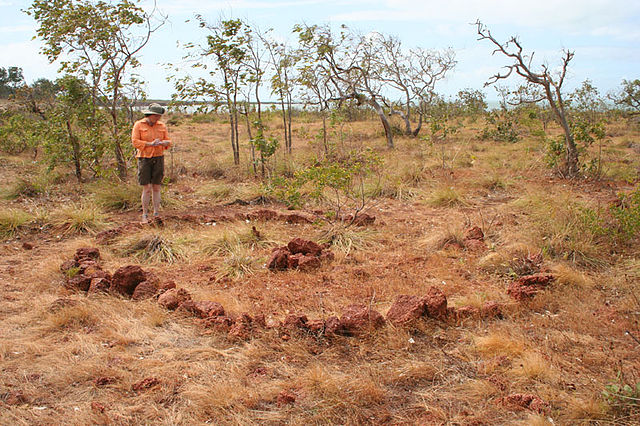Makassan contact with Australia
Makassar people from the region of Sulawesi in Indonesia began visiting the coast of Northern Australia sometime around the middle of the 18th century, first in the Kimberley region, and some decades later in Arnhem Land. They were men who collected and processed trepang, a marine invertebrate prized for its culinary value generally and for its supposed medicinal properties in Chinese markets. The term Makassan is generally used to apply to all the trepangers who came to Australia.
A type of Makassan perahu, the patorani
An example of a sea cucumber from the Mediterranean
Model of Makassan perahu, Islamic Museum of Australia
Makassan stone arrangement near Yirrkala, Northern Territory
Makassarese, sometimes called Makasar, Makassar, or Macassar, is a language of the Makassarese people, spoken in South Sulawesi province of Indonesia. It is a member of the South Sulawesi group of the Austronesian language family, and thus closely related to, among others, Buginese.
Sample of a handwritten book, written in Makassarese using the Makasar script, of a diary of the Princes of the Sultanate of Gowa. The palláwa punctuation signs, typical of this script, are drawn and colored in red, as well as a few proper names and some inserts in Arabic.
Museum display showing script comparison of Makasar (left), Lontara (center), and Bilang-bilang (right) at Balla Lompoa Museum, Sungguminasa, Gowa






